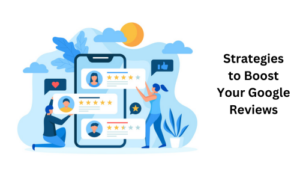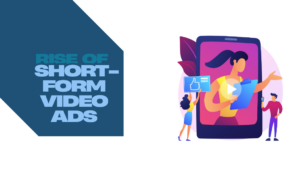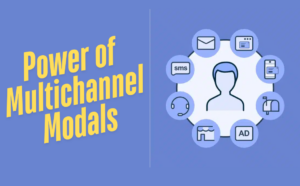Important Phases of Mobile App Development That You Should Know – Thousands of mobile apps are published to the Google Play and Apple App Stores daily. Some mobile apps are games, others are social networks, and many are e-commerce apps. Thus, all of these apps, if professionally built, should follow a similar mobile app development process. Digital Marketing 360, we have built over 300 web and mobile apps and are considered the best mobile app developer in Chicago. In this article, I will outline the critical phases of mobile app development that our app developers use.
Table of Contents
ToggleNowadays, making a mobile application isn’t rocket science. But, making a successful mobile application is a process involving quite an extensive pre-planning. DM360 the best service provider of Chicago app development offers the path that will give shape to your vision. So, with that said, here’s a look at the app development lifecycle and the objectives and challenges along the way.
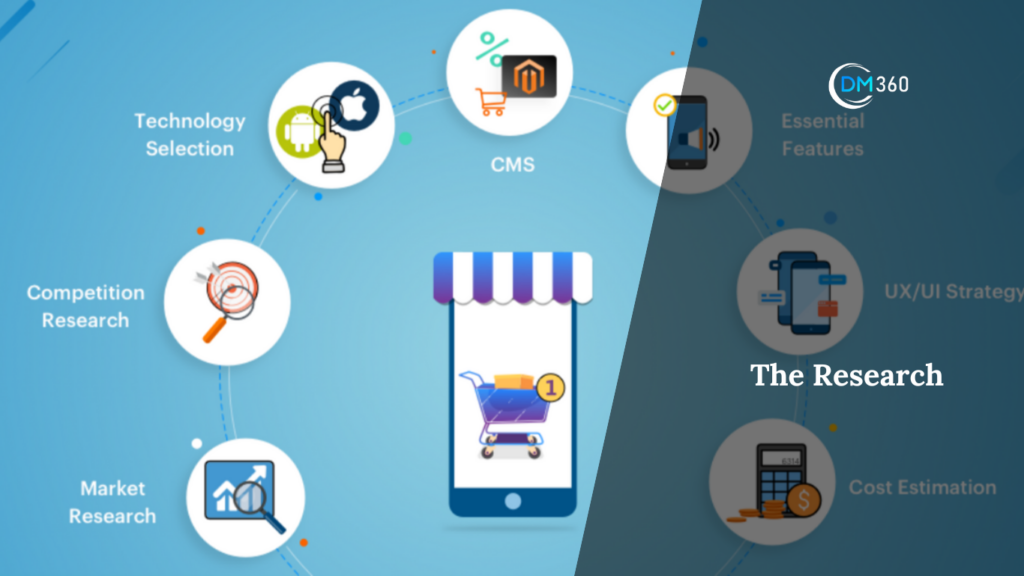
The Research
Firstly, all apps start with an idea, even if yours is just to have a mobile app presence. So, refine that idea into a solid basis for an application. Ensure your initial analysis includes actual demographics, motivations, behavior patterns, and goals of your buyer persona. During each stage of the process, keep the end-user in mind. Next, consider your customer’s lifecycle once their characteristics are pinned down.
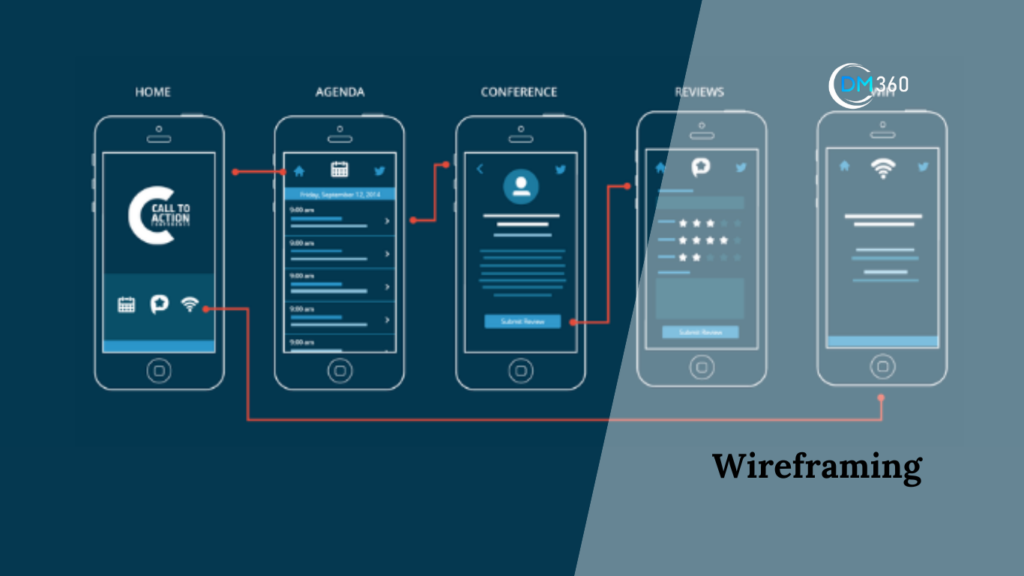
Wireframing
Well, the second step is to document and wireframe the app, to understand future functionalities. However, time is not on your side at this point, actually drawing detailed sketches of the envisioned product helps you uncover usability issues. Whenever you’re done sketching, wireframing will help refine the ideas and arrange all components of the design in the right way.
And, focus on the user experience and keep in mind the differences in the way people use a mobile app versus a mobile website.
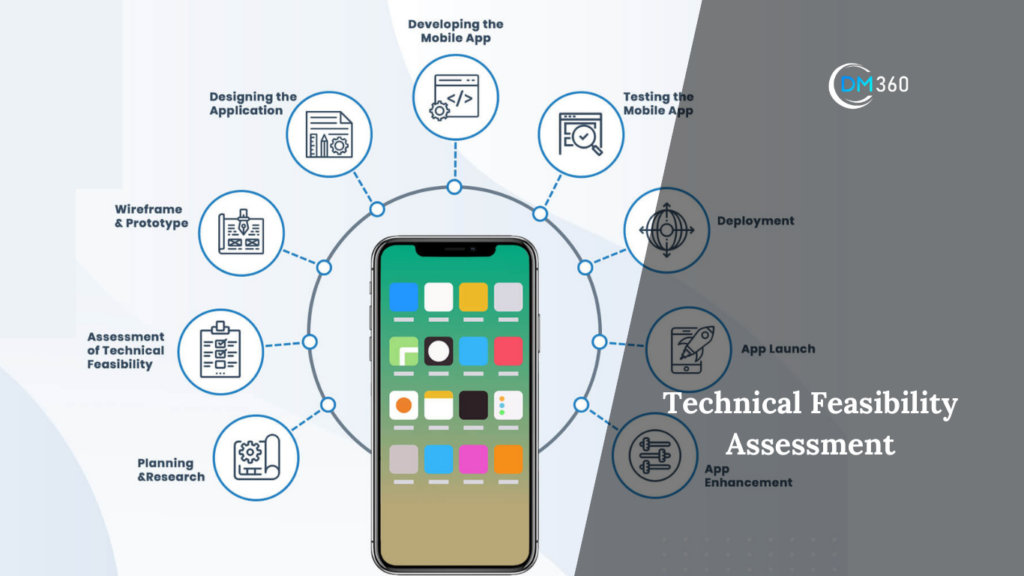
Technical Feasibility Assessment
Next, you might have a clear understanding of the visuals by now; however, you also need to consider if the back-end systems will be able to support the app’s functionality. To know whether the idea of your application is technically feasible, an app, depending on its format and the platform, will have different requirements. DM360’s team may have other ideas for the app or have decided that some initial functionality isn’t feasible. So, at this point, brainstorm a little, ask questions, and review the status.
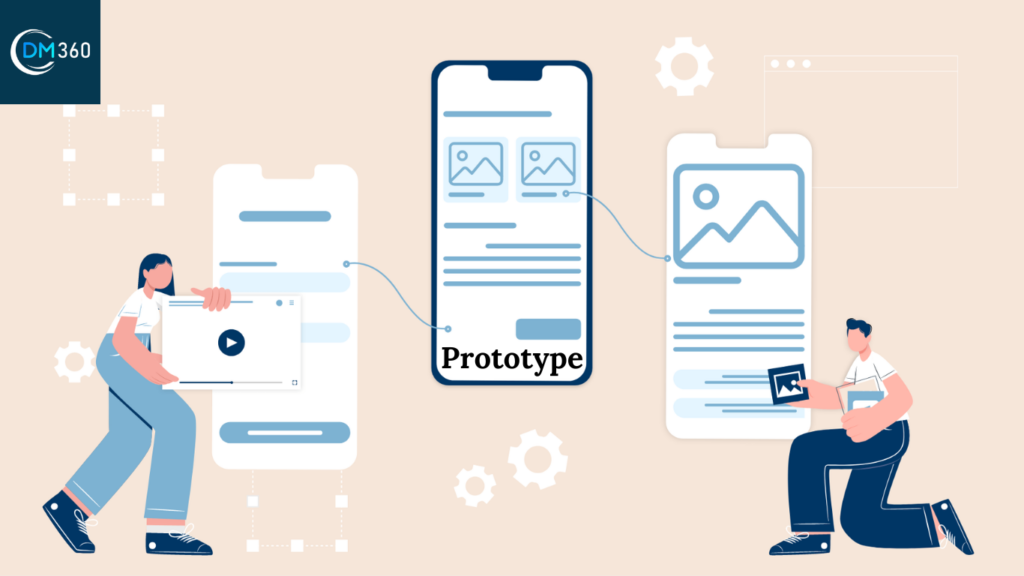
Prototype
Moreover, build a rapid prototype. And you can’t truly comprehend the touch experience until and unless you touch the App and see how it works and flows. Thus, build a prototype that gets the app concept into a user’s hands as quickly as possible to see how it works for the most common use case. Also, using rough and not exhaustive wireframes for this phase will help you know if you are taking things in the right direction. The prototype will give different stakeholders the first look at your app and help you validate the information you have gathered
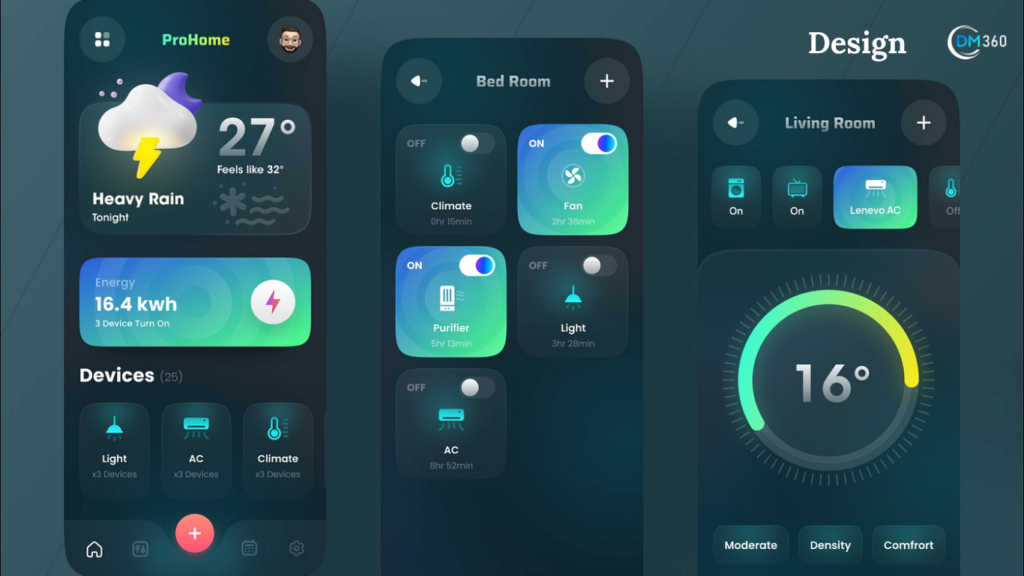
Design
Moving further, once you get this step out of the way, you can dive into coding. And, your user experience (UX) designer architects the interaction between design elements, as the user interface (UI) designer builds the look and feel of your app. Thus, depending on your project scope and app budget, this design phase can be completed in a single afternoon or can take a team a whole lot of hours. Also, remember to create multiple variations of a screen by playing around with the layout of navigation, buttons and other visual elements. Plus, the more your product varies, the higher the chances of your UX being original.
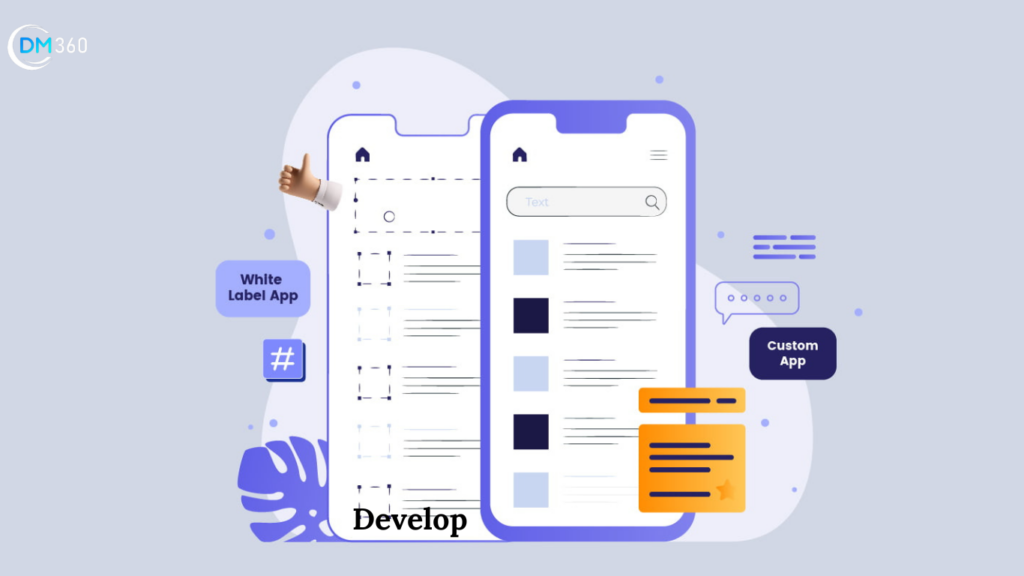
Develop
Further, the development phase generally starts quite early on. Well, one time an idea gains some maturation in the conceptual stage, also a working prototype is developed which validates functionality, assumptions, as well as assists to give an understanding of the scope of work.
Next, in the initial stage, the core functionality although present is not tested. Thus, see the app is very buggy, and non-core functionality doesn’t exist at this point. And, in the second stage, much of the functionality proposed is incorporated. So, the app has ideally gone through light testing and bug fixing, though some issues could still be present during this phase, the app is released to a certain group of external users for more testing. Lastly, after the bugs in the second stage are fixed, the app will move to the deployment phase where it’s ready for release.
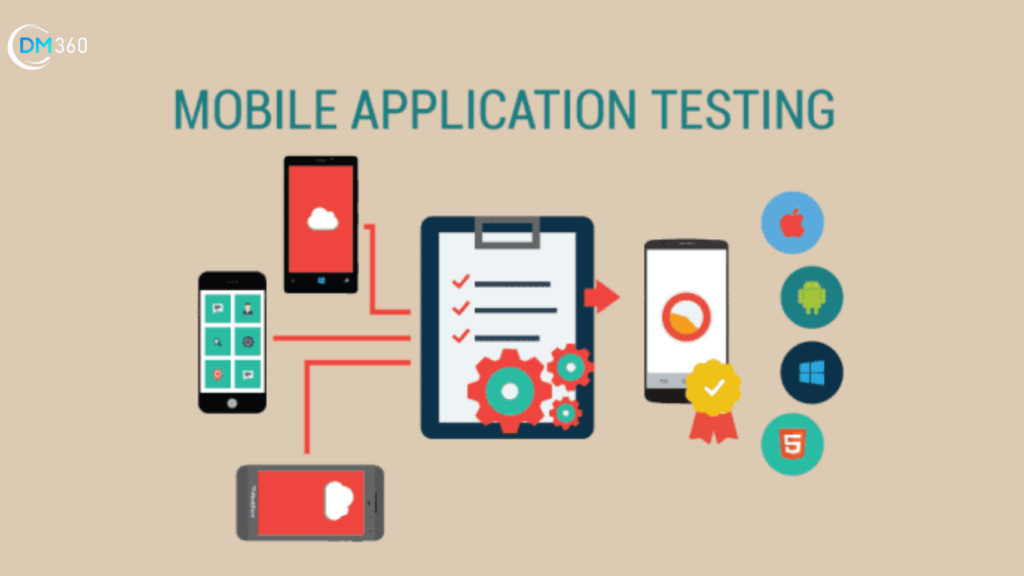
Testing
Well, in mobile app development, testing early and often is a good idea. Doing this will keep your final costs low. And, the farther you go into the development cycle, the costlier it becomes to fix bugs. Also, refer to the original design and planning documents while building the various test cases.
However, application testing is vast, so make sure your team covers all the necessary facets of it. The application should also be tested for usability, compatibility, security, interface checks, stress, and performance.
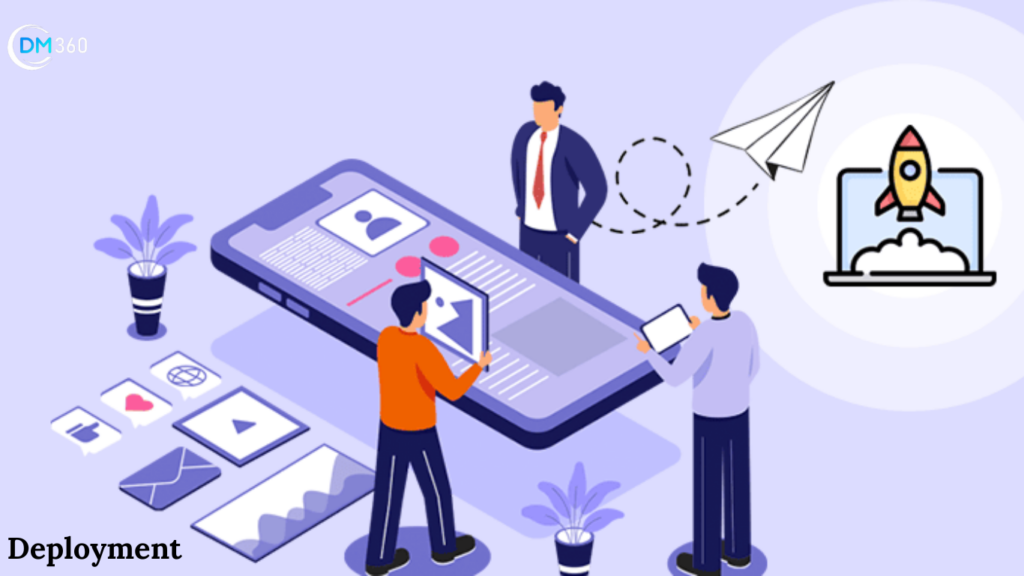
Deployment
Lastly, your app is ready to submit. So, for different application stores, the policies for launching an application are different. And keep in mind, this is not the end. And, app development doesn’t end at launch. Thus, as your application gets in the hands of users, feedback will pour in, and you will need to incorporate that feedback into future versions of the app. importantly, every app will need updates and new features. Usually, as soon as the first version of the app is released, the development cycle begins anew. Besides, the money invested in building a digital product, keep in mind that it’s a long-term commitment.
Why Choose Us
At DM360, we stand out as the premier choice for mobile app development in Chicago. Here’s why you should choose us:
- Extensive Experience: With over 300 web and mobile apps developed, we bring a wealth of experience to every project.
- Client-Centric Approach: We prioritize understanding your vision and tailor our solutions to meet your requirements.
- Expert Team: Our skilled developers, designers, and strategists ensure top-notch quality and innovation in every app we create.
- Proven Track Record: We are renowned for delivering successful mobile applications that exceed client expectations.
- Continuous Support: Our commitment doesn’t end with deployment; we provide ongoing support and updates to ensure your app remains cutting-edge.
FAQs
1. What sets DM360 apart from other app developers?
At DM360, we combine technical expertise with a deep understanding of user behavior to craft mobile apps that resonate with your audience. Our focus on user experience and commitment to excellence set us apart in the industry.
2. How long does the mobile app development process take?
The timeline for app development can vary depending on the project’s complexity and specific client requirements. However, we strive to deliver efficient and timely solutions while maintaining quality.
3. Do you provide post-launch support and maintenance?
We offer comprehensive post-launch support and maintenance services to ensure your app remains functional, secure, and up-to-date. Our team is dedicated to addressing any issues and implementing enhancements as needed.



